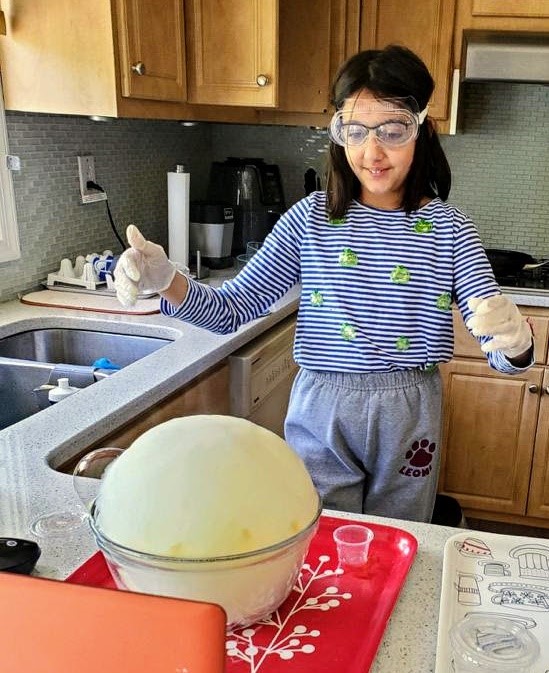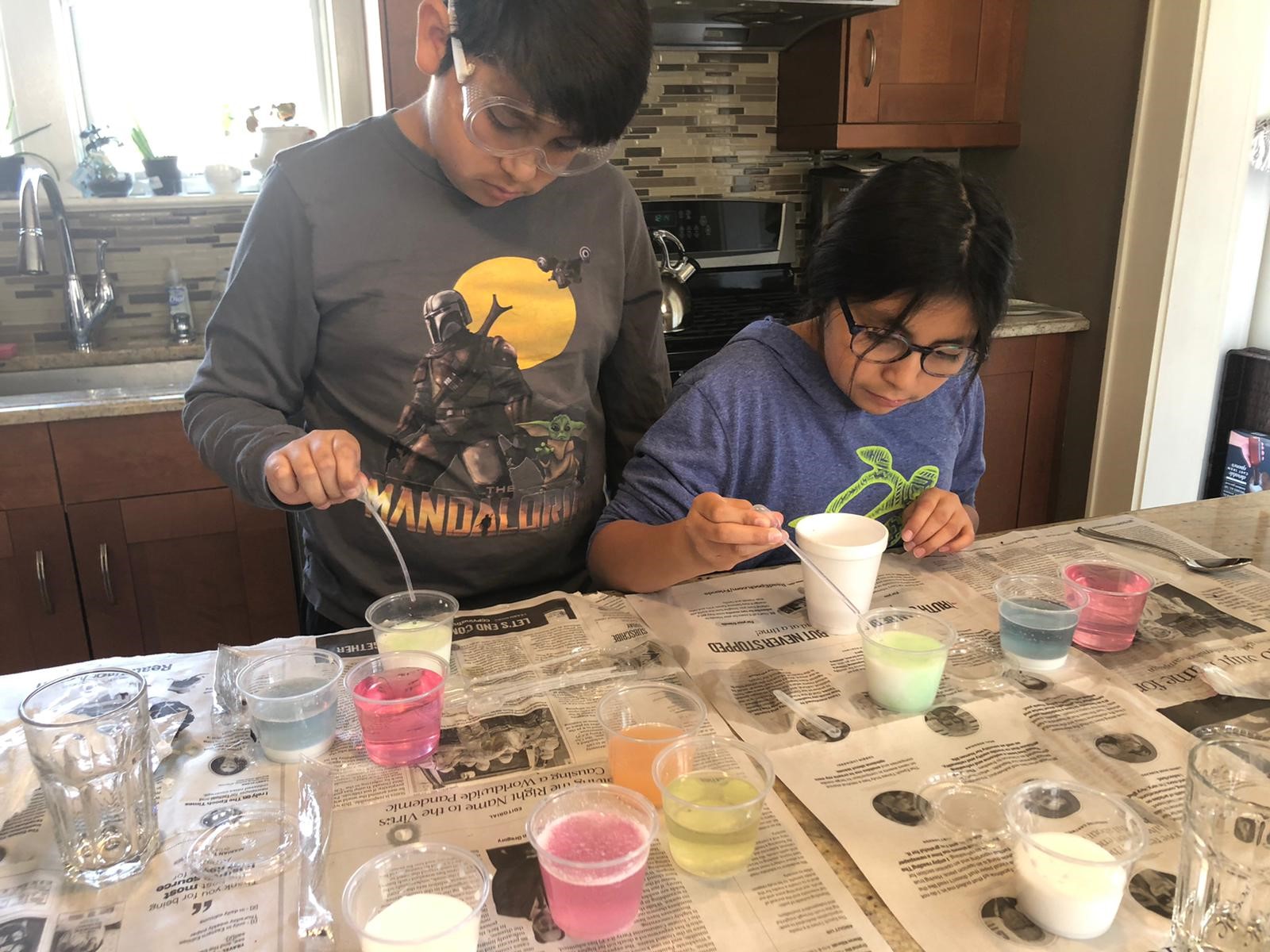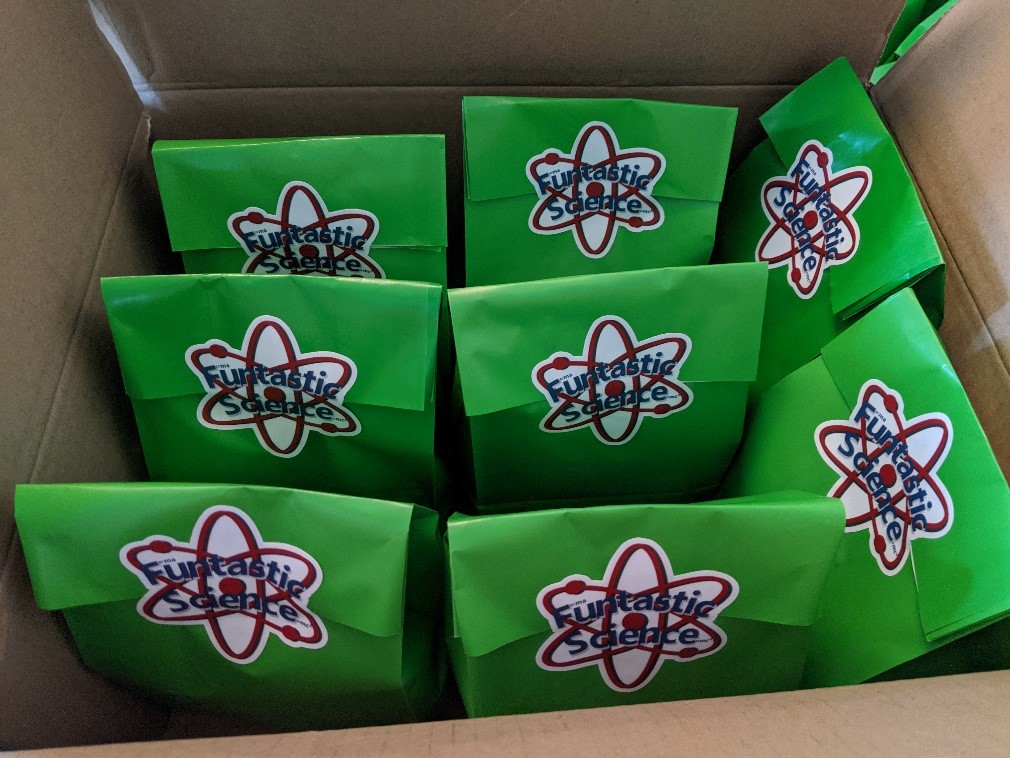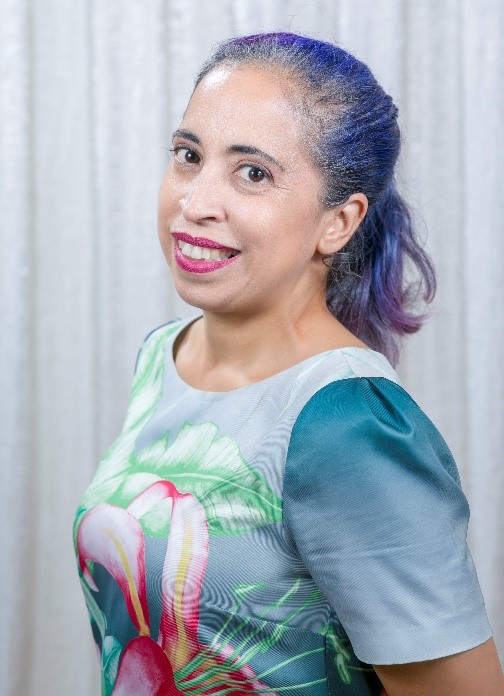Next Gen Navigator
Discovering Community and Learning
By Wanda Rodriguez
Posted on 2020-09-24
Disclaimer: The views expressed in this blog post are those of the author(s) and do not necessarily reflect the official position of the National Science Teaching Association (NSTA).
Hello, COVID-19 life. Can’t say I'm happy you’re here. But challenge accepted. Positive attitude, chin up, eyes bright.
I’m an independent contractor, not a full-time classroom teacher. I’m that fun aunt you send your kids to for the weekend who plies them with candy, then sends them home all excited (mostly from the sugar). Before the pandemic, it was the best of times. I made my own schedule and taught all the noisy, messy (read “highly engaging”) lessons my students craved. No political red tape, pesky paperwork, or evaluations.
Then COVID-19 hit. Schools closed, and extracurricular activities were kaput. Now what? I needed to plan my COVID-19 teaching life.
I was in the middle of an eight-week afterschool program when schools closed. I wasn’t sure online interactive science would fly. My knee-jerk reaction? No way. How do you make science highly engaging with a talking head on your screen? How do you give individual attention to students? How do you differentiate, redirect, and refocus? How do you get parents and families to commit to more time online? It would take me a few weeks to discover the answers.
My lifelines? Reach out to others in my community!
1. Partner with parents and families in the same boat.
2. Partner with community groups in the same boat.
3. Partner, commiserate, and brainstorm with other independent contractors in the same boat.
4. Build a bigger boat.
I started by partnering with my students’ parents and families. I offered Science Snacks, a free, once–a-week, half-hour program. It allowed me to maintain a connection with my students, enabled parents and families to see the value of participating in extracurricular science activities, and helped me learn how to translate “hands-on/interactive activities” into an online environment.
Science Snacks ran for four weeks. I started by asking parents to gather simple household materials for experiments. The NSTA Daily Do Why is the water in the glass? activity worked well with household items, and it reminded me that the glass is neither half full nor half empty.
Facebook, Instagram, TikTok, and Zoom became my friends (and enemies at times). I found some things worked, but others did not. I still had learning to do.
Could this be the proverbial “when one door closes, another opens” scenario? (The actual quote is: “When one door closes, another opens; but we often look so long and so regretfully upon the closed door that we do not see the one which has opened for us.” The irony of quoting Alexander Graham Bell is not lost on me.) “Maybe online and interactive aren’t mutually exclusive terms,” I thought.
I found a local studio I’d worked for in the past in the same boat as I was: Worried parents had pulled students from their classes well before the state officially shut down. A few weeks into my Science Snacks program, the studio asked if I would be interested in teaching online science classes for them. I then learned that more of these types of groups were in my boat than I first realized.

I reached out to other community groups (libraries, scout groups, etc.) and found support for teaching online interactive science all around me! It turns out I didn’t need a bigger boat; we just needed to learn to how to keep the boat afloat and navigate the waters together.
By the end of the school year, I was floating along and feeling confident. Time for me to throw out a life preserver to others. I contacted other colleagues in the afterschool business; a local (New Jersey) chess tutor, a theater teacher from Georgia, and a fellow science enrichment teacher all the way across the country in California. We now have a weekly meetup in which we share ideas, experiences, and hopes for the future.

During this same time, I expanded my Science Snacks program from individual, one-touch lessons to a six-week unit. I began to pack materials into actual “snack bags” (one for each class) to allow for some more complex investigations. I mail these “snack bags” (in some cases, I hand-deliver them) to parents and families to limit the need for them to leave their homes to source materials. Until recently, COVID-19 was still peaking in the tri-state area.

Now it’s September, and I’m starting a new school year in New Jersey. Even for schools that are holding face-to-face classes, it will be quite a while before afterschool programming returns. But I am buoyed by my communities in this boat with me. We continue to learn new ways to navigate uncharted waters toward our destination.

Wanda Rodriguez is the sole proprietor of Funtastic Science Programs. She has been involved in science education for more than 30 years. Rodriguez has been able to break, explode, dissect, and generally make a lot of big messes—all in the name of science—from her work at Liberty Science Center, New York Hall of Science, American Museum of Natural History, and Carnegie Science Center. She has a BA in Elementary Education from CUNY-Brooklyn College and an MBA in Project Management from Aspen University. Find her on Facebook at https://www.facebook.com/FuntasticScience/; on Instagram at https://www.instagram.com/nerdygeeklife/.
Note: This article is featured in the September 2020 issue of Next Gen Navigator, a monthly e-newsletter from NSTA delivering information, insights, resources, and professional learning opportunities for science educators by science educators on the Next Generation Science Standards and three-dimensional instruction. Click here to sign up to receive the Navigator every month.
The mission of NSTA is to promote excellence and innovation in science teaching and learning for all.
NGSS Teacher Preparation Teaching Strategies Elementary


